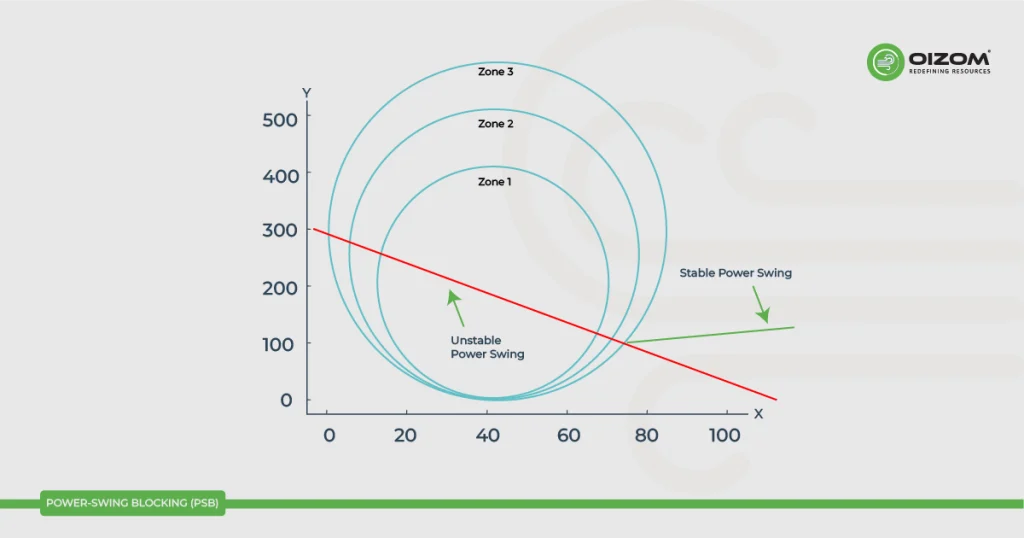Find the terms by letter
PSB
Definition
A power-swing blocking (PSB) function is available in modern distance relays to prevent unwanted distance relay element operation during power swings. The main purpose of the PSB function is to differentiate between faults and power swings and block distance or other relay elements from operating during a power swing.
Definition and Description
Power swing blocking is a protective scheme used in electrical power systems to prevent or block the operation of certain protective relays during power swing conditions. A power swing is a temporary disturbance in the electrical grid that occurs when a large amount of electrical energy surges through transmission lines due to system disturbances like faults or sudden load changes. During a power swing, the system’s voltages and currents can oscillate, creating conditions that may falsely trigger protective relays. Power swing blocking schemes are designed to distinguish between these temporary swings and actual fault conditions. When a power swing is detected, power swing blocking temporarily prevents protective relays from issuing tripping commands, allowing the power swing to stabilize and subside naturally. This prevents unnecessary power system disruptions and helps maintain grid stability. Once the power swing is over, the protective relays are unblocked and can operate normally to protect the system from actual faults. Power swing blocking is an important feature in modern power systems to maintain reliable and secure grid operation.



